To drive in Sicily is to become part of a functioning chaos. Drivers do not pay attention to lanes, speed, or turn signals. And, they haphazardly take on the narrow roads that jaggedly cut through each town. Knowing this, Isabel and I still rented a car. In our tiny Toyota Yaris, we zoomed around the island in 3-days. Here is a map of our travels (we moved in a clockwise direction as we went, beginning in Palermo, then San Vito Lo Capo, Sciacca, etc.):
Here are the highest highs and lowest lows:
We started our trip in the perfect waters of Spiaggia Riserva Naturale Orientata dello Zingaro, a stunning cove on the northwestern peninsula.
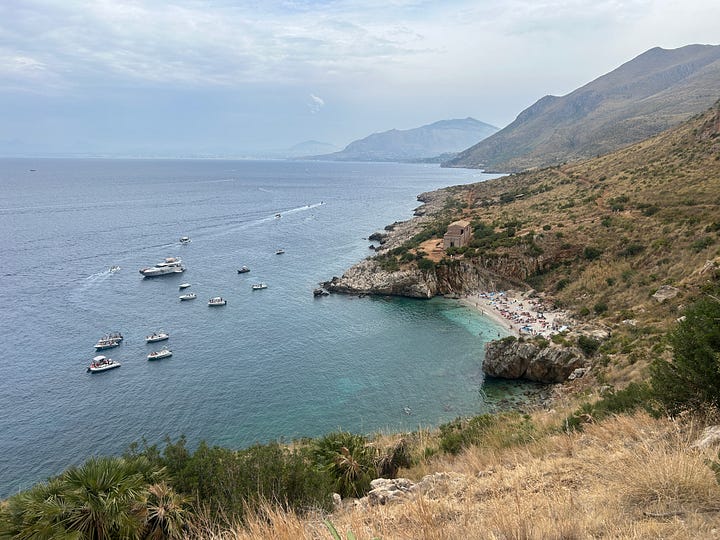
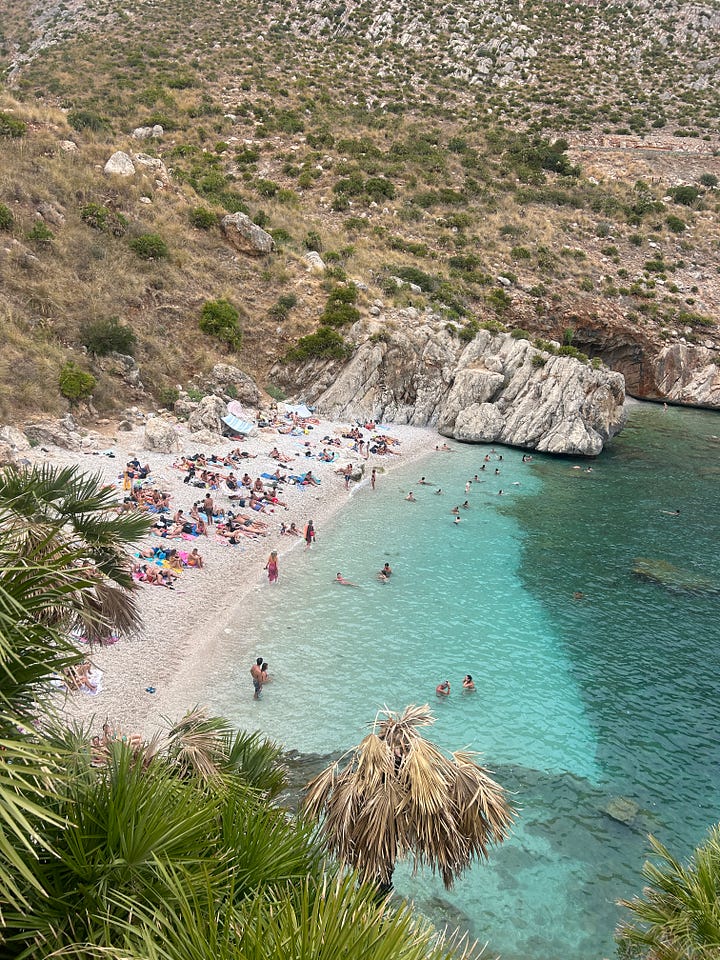
Immediately after swimming, we went to the nearby town, San Vito Lo Capo. We parked our car and walked the square for half an hour to find food and water, and then returned to our parking spot. However, our car was no longer there. A nearby policeman told us our car had just been towed a few minutes before. We walked 25 minutes across town to find the towing company. In addition to paying 110 Euros between the towing and the parking ticket, we had the worst food we’ve had yet on the island. Don’t visit San Vito Lo Capo.
Luciana told us that beaches are generally safe to sleep on, but as mosquitos also love sleeping on beaches, we opted for car camping near the beach. Each morning, we hopped into the water before driving again. Check out the turmeric-colored sand near Sciacca.
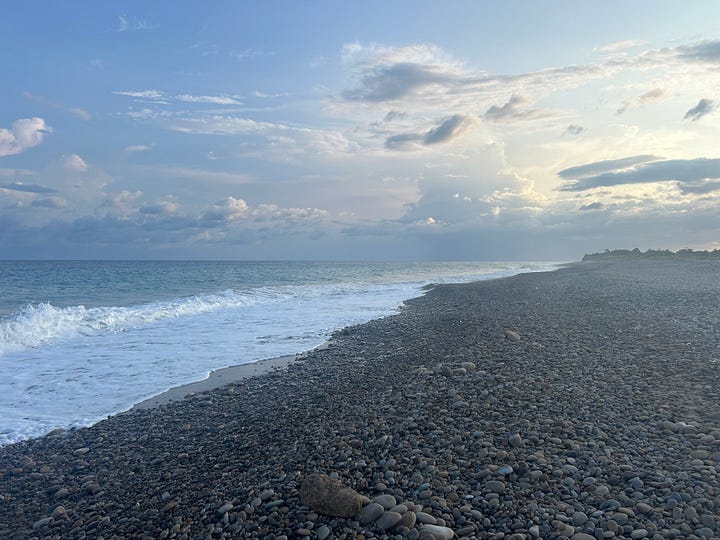
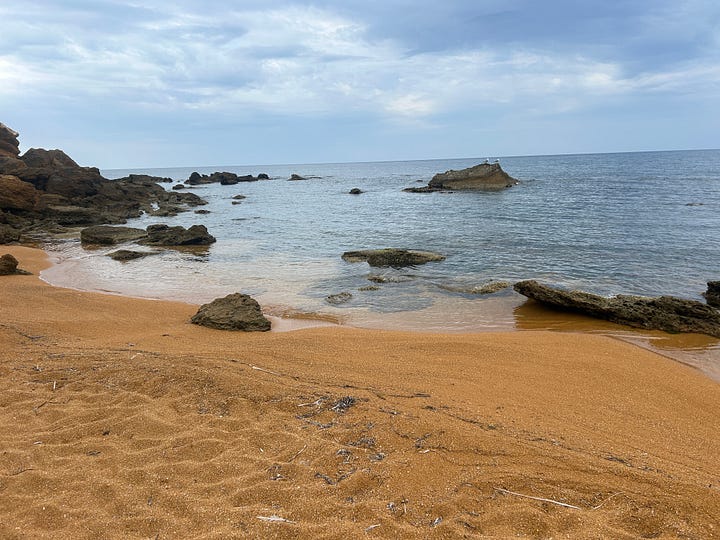
Agrigento’s archeological park and museum were spectacular. The temples of Concordia, Hera, and the gigantic Telemon figures that stood on the sides of the temple to Zeus all felt worth the price of admission.
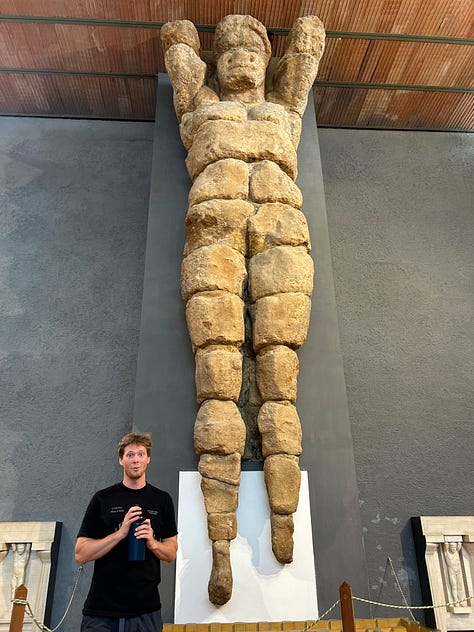
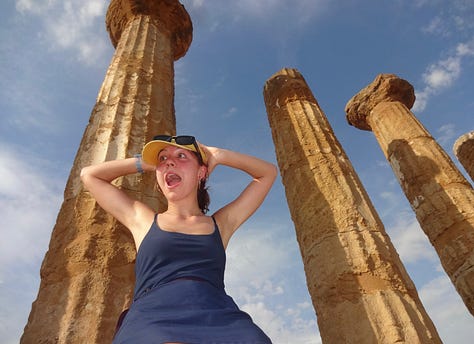
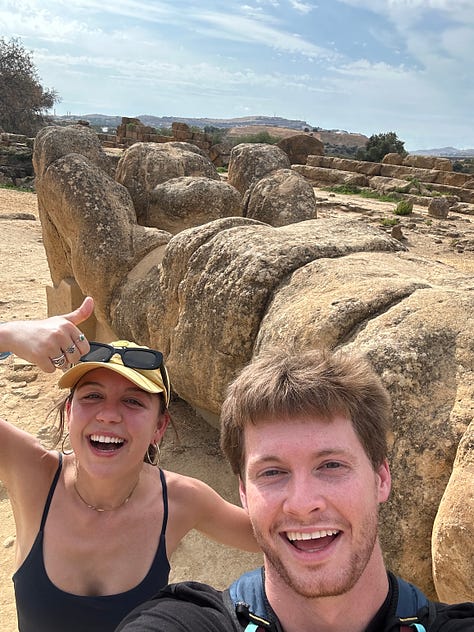
On the other hand, Syracuse’s Archeological Park was disappointing in multiple ways. The park claims to have one of the most complete Ancient Greek theatres. However, they have covered the entire theatre with wooden slats to form new seats for modern performances. This is, aptly, a tragedy. None of the original stones can be seen. In addition to this, not one descriptive sign can be found throughout the entire park, in Italian, Greek, or English. You must wander around, hoping to catch the words of a guide leading a group. One incredible part was the “Ear of Dionysius”— a prison cave that the Syracusian tyrant, Dionysius I, had carved in the 5th century BC. Because the acoustics are so good, Dionysius was able to listen at the opening of the cave and hear what the prisoners within were saying about him (all good things, all good things, I’m sure).
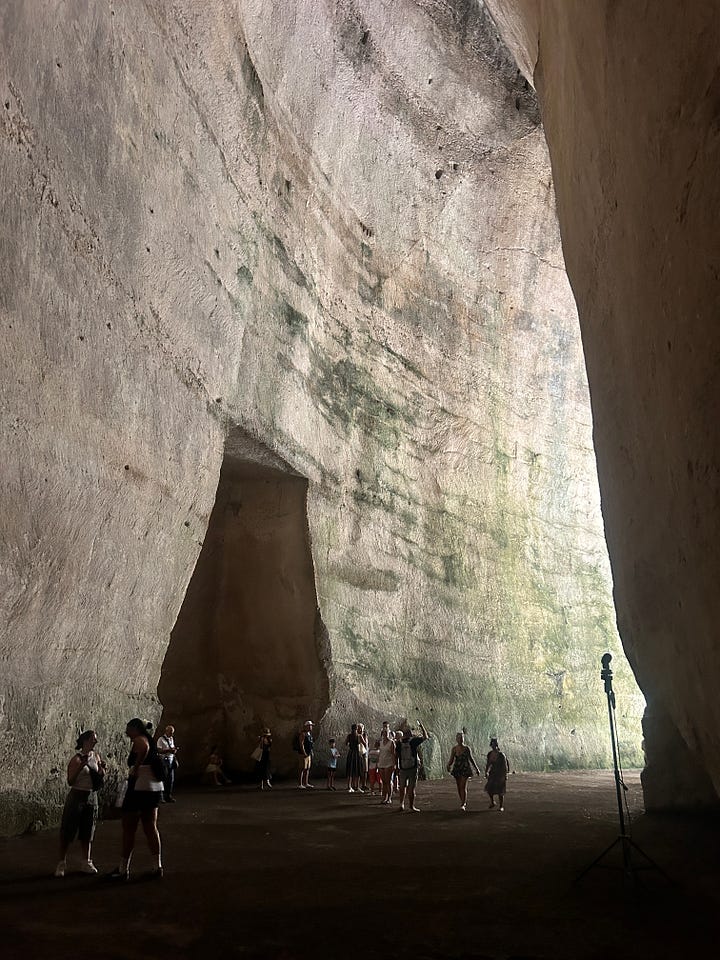

Ear of Dionysius Besides its lackluster park, Syracuse redeemed itself with the Cathedral of Syracuse. Hundreds of years before Homer had conceived of his Iliad, the spot where the cathedral stands held a single altar, where cult members would come and make sacrifices to an ancient female god that predated Athena. That cult slowly built a small temple around this altar. 300 years later, the Greek tyrant Gelon washed away the cult and built a large Doric temple on top of the site to honor Athena. In 61 AD, St. Paul came to this very temple to preach. Gelon’s temple to Athena prominently stood for 1200 years until the Catholic Bishop Zosimus transformed the spot into a Catholic cathedral for Mary in 700 AD. 180 years later, the Arabs conquered Sicily, and the cathedral became a mosque. Another few hundred years later, the Catholics regained control and the spot was again transformed into a cathedral for Mary. I find it interesting that the Proto-Greeks, the Hellenes, and the Catholics all chose this spot as a place to worship the most venerated woman in their religion. In any case, this spot has seen over 3000 years of religious activity. The ancient columns still stand here, and you are able to give them a hug for all they have been through, as I did.
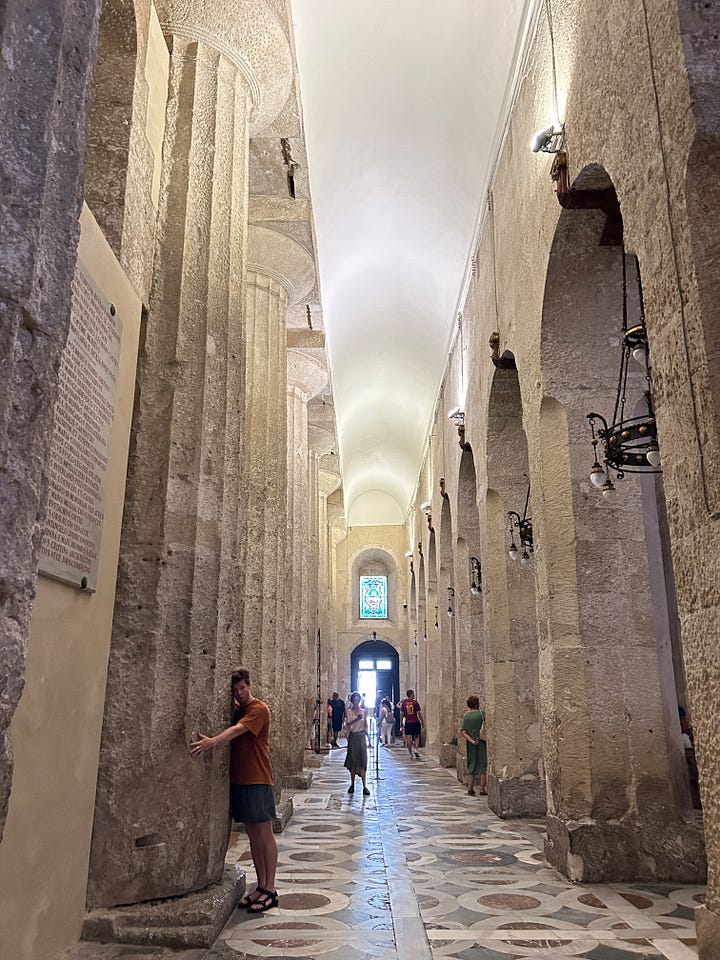
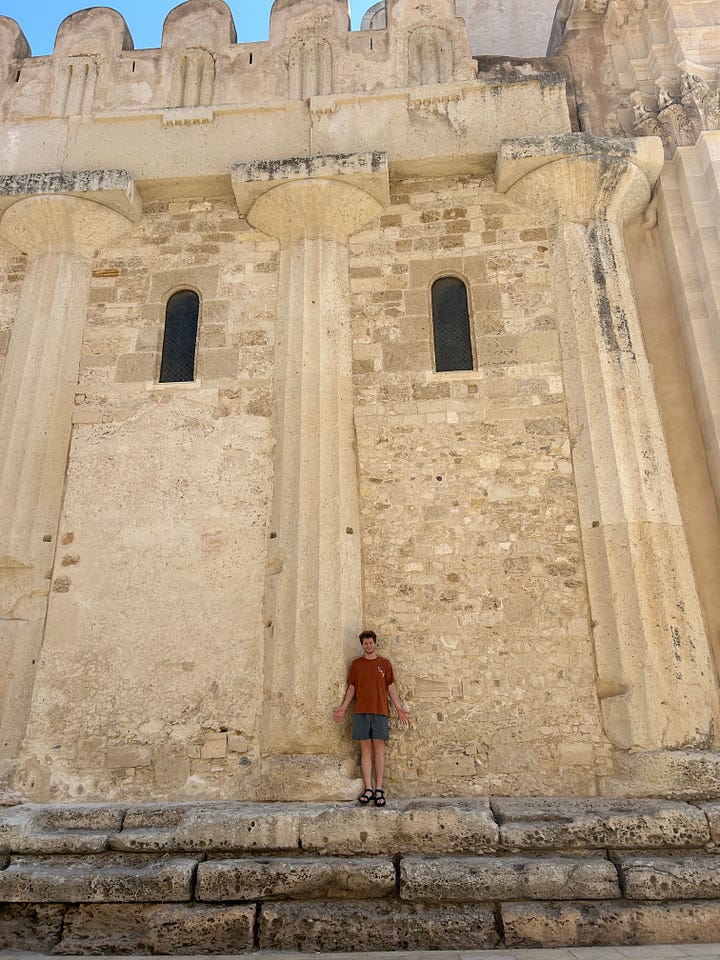
From Syracuse, we drove north toward Catania, where we sat at Trattoria Le Tre Torri, a grimy corner spot where a young Sicilian man shouted loudly and wildly at people walking down the street. It appeared like some kind of overblown ballpark beer salesman performance. The specialty at Le Tre Torri is Horse. We each ordered the sampler platter: Horse meatballs, Horse flank steak, Horse stuffed with cheese and ham, and Horse bacon wrapped around chive. It was rather horrible. The meat tasted like it was soaked in bad olive oil and left out for days. We met a young boy from Catania on a train who said that the horse culture of Catania began when horse racing was made popular. They did not want to waste the horses after they killed them. He also said there are still places that serve horse meat filled with cocaine and the other stimulants that the racing horses are filled with. Perhaps this is why Isabel and I felt such a jolt of energy leaving the corner, or maybe we were just happy to leave.
We followed Google Maps through a mountaintop town called Enna. This was a mistake—the map took us deep into the tiny zig-zag roads. After multiple close calls with the walls of buildings and homes, the road suddenly turned into stairs. With a deep breath, we slowly reversed the car back out every curve and tiny turn. Old women were sticking their heads out of windows to watch the spectacle of a tourist driving their streets.
On the final night, we drove through the mountain roads of Etna to find a beach on the northern coast. We saw a great white dog four times along the drive. We also saw a large black dog sitting beside a black goat with a bell around its neck. In the middle of the night, these were startling sights on the back roads of Sicily. When we returned to Luciana’s house, we told her about these dogs and she said the white dogs were our guardians and the black goat and dog were the devil. She then brought out many Tarot books and decks and laid them on the table, as if to say, “There is some weird ju-ju going on with these two.”
That’s our road trip! Look for Isabel’s part 2 about departing Sicily.






Have either of you tried Horse before now, and was it better?
And the tarro cards said....❤️